-
Act I
Scene 1. The Sacred Forest, outside the temple
Warriors returning from the great tiger hunt are joined by Solor, the noblest warrior in the land. He asks to be left alone to pray before the Sacred Fire, but once the warriors have departed, he calls for the head Fakir, Magdaveya, and asks him to arrange a rendezvous for him with the bayadère, Nikiya. They are interrupted by the arrival of the priests and the High Brahmin who orders Magdaveya to gather the other Fakirs to prepare the Sacred Fire for the coming celebration. The bayadères appear, and among them is Nikiya, who has been chosen to be consecrated their leader. The High Brahmin is overwhelmed by her beauty and tells Nikiya of his love for her. Nikiya, however, rejects his attentions for he is a man of God. The High Brahmin is deeply hurt by her reaction to his declaration of love. As the celebration begins, the temple dancers bring water to the Fakirs, and Magdaveya informs Nikiya of Solor’s message. Nikiya agrees to meet him, but not before the High Brahmin has seen her with Magdaveya and becomes suspicious. The ceremony ends and the celebrants return to the temple. Magdaveya calls for Solor and tells him to hide in the forest until Nikiya returns to meet him. She soon appears, and when Solor joins her they swear eternal love over the Sacred Fire. Unbeknown to Solor and Nikiya, the High Brahmin has been watching them from within the temple, and after an uneasy Magdaveya separates the lovers, the High Brahmin emerges in a fury and invokes the gods to help him kill Solor.
Scene 2. A room in the palace
Warriors have been invited to the palace to honour Solor. The Rajah announces that Solor’s reward for his valour will be marriage to Gamzatti. He presents his daughter to Solor, and when he lifts her veil, Solor is overcome by her beauty. Even though he has sworn eternal love to Nikiya, he cannot resist Gamzatti’s attractions or refuse the Rajah’s wishes. Entertainment is provided for the betrothed couple, which ends with the arrival of the High Brahmin. He asks to speak privately to the Rajah, and informs him of Nikiya’s and Solor’s love. He had hoped that the Rajah would kill Solor, but the Rajah instead decides that Nikiya must die, to the dismay of the High Brahmin. Gamzatti overhears their conversations and summons Nikiya to her rooms. She tries to bribe her to leave Solor by offering her jewels and gifts, but Nikiya refuses. In desperation, she tries to stab Gamzatti, but is stopped by her attendant, Aya. As Nikiya runs out of the room, Gamzatti, like her father, determines to kill her.
Scene 3. The garden of the palace
Festivities are presented in honour of the betrothal of Gamzatti and Solor. The High Brahmin brings Nikiya to dance for the ceremony. She cannot accept the engagement and expresses her sadness in dance. Aya gives her a basket of flowers which she says are from Solor, and Nikiya’s spirits brighten. However, a poisonous snake is hidden among the flowers, which were actually sent by the Rajah and Gamzatti. The snake bites Nikiya as she lifts the basket to smell the flowers. The High Brahmin offers her an antidote to the poison, but the moment before she drinks it, Nikiya sees Solor being led away by the Rajah and Gamzatti, and she decides to die.
-
Act II
Scene 1. Solor’s tent
Despondent and depressed by Nikiya’s death, Solor smokes opium, given to him by agdaveya to deaden his grief.
Scene 2. The Kingdom of the Shades
Solor hallucinates and conjures a vision of the dead Nikiya. She appears in the Kingdom of the Shades, and her vision is multiplied by the corps de ballet. Solor reminisces about her dance of love by the Sacred Fire.
Scene 3. Solor’s tent
As the warriors enter his tent to prepare Solor for the wedding to Gamzatti, the vision of Nikiya continues to haunt and confuse him.
-
Act III
The temple
In the shadow of the Great Buddha, a bronze idol dances as the High Brahmin and the priests prepare for the wedding of Gamzatti and Solor. The betrothed couple enter, and the bayadères perform a ritual candle dance round them, reminiscent of the Sacred Fire burning outside the temple. The Rajah, Gamzatti and Solor dance, but Solor is haunted by the vision of Nikiya, which is visible only to him. During the dance, a basket of flowers identical to the one given to Nikiya mysteriously appears, and Gamzatti, terrified and consumed with guilt, urges her father to complete the wedding ceremony. The High Brahmin performs the ceremony on the steps of the altar, but Solor cannot force himself to say the vows. The infuriated gods destroy the temple and bury everyone under its ruins. The spirits of Nikiya and Solor are reunited in eternal love.





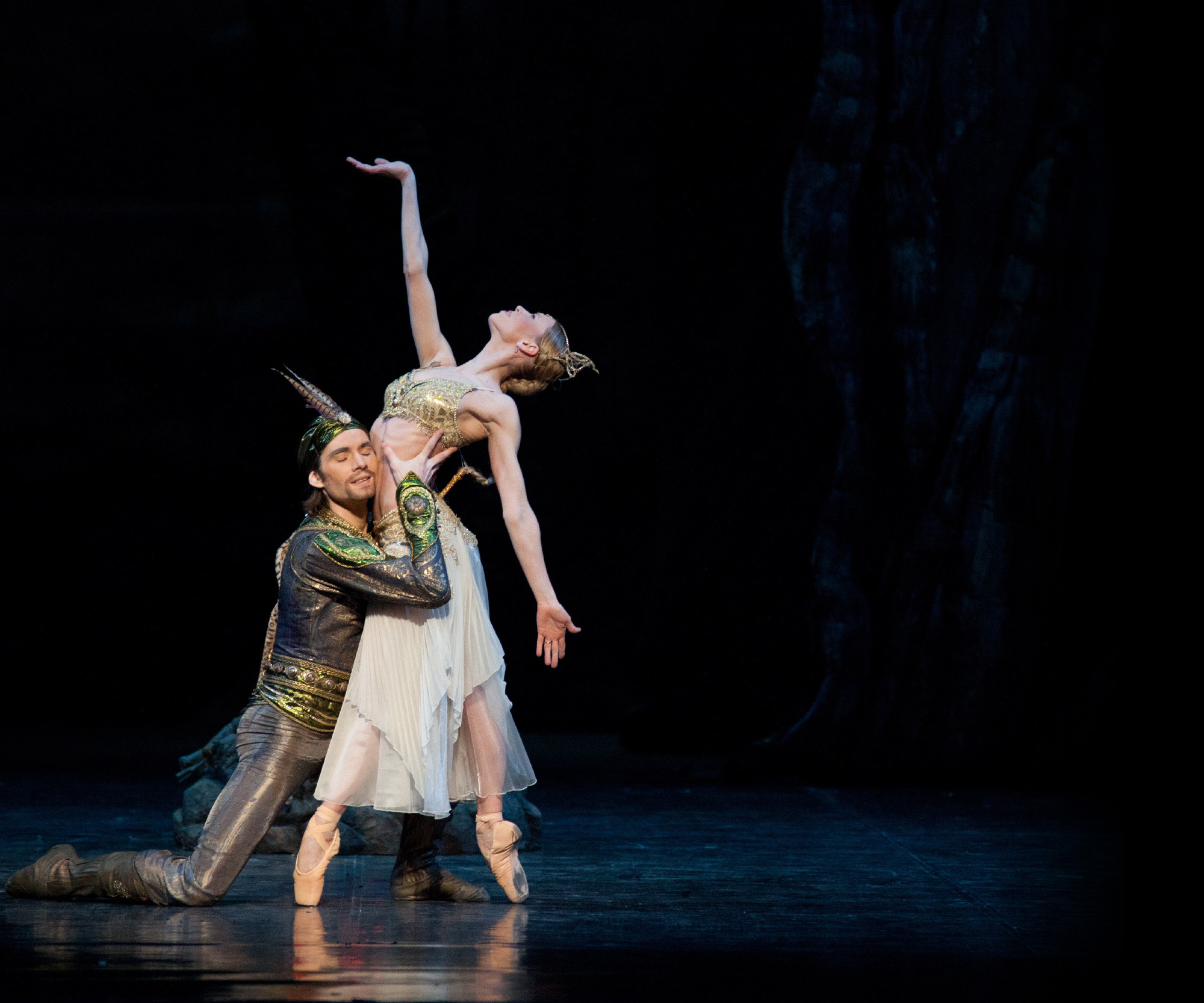
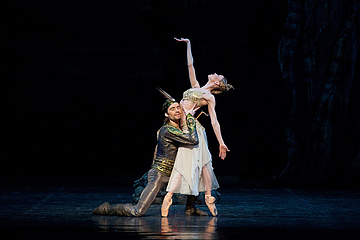
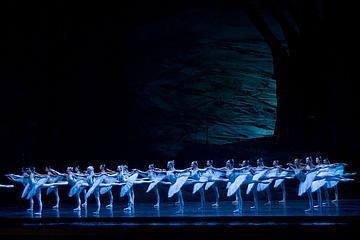
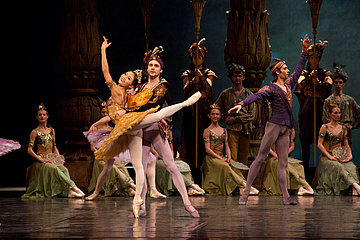
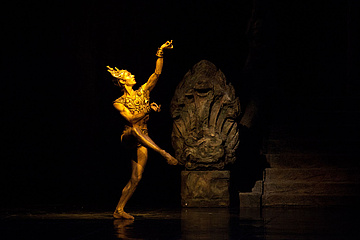

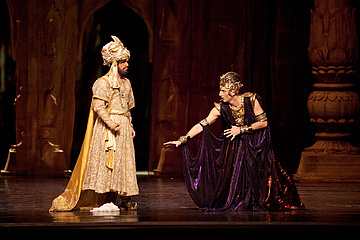
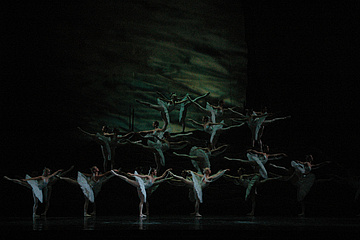
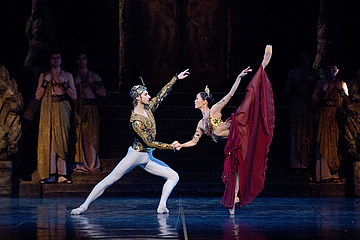
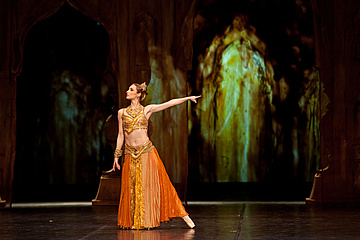
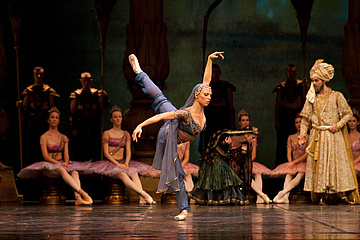
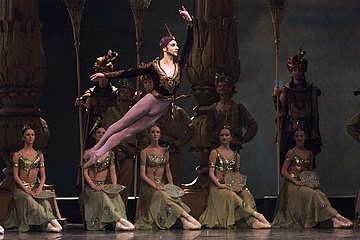
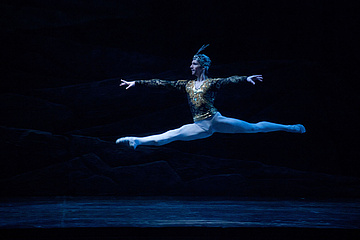
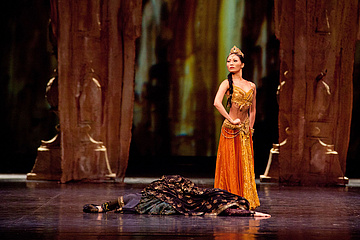
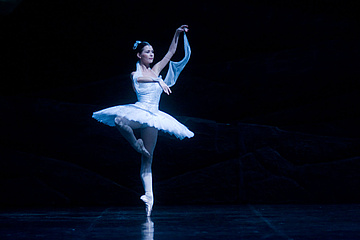
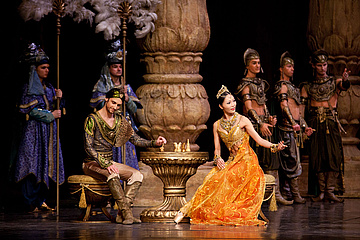
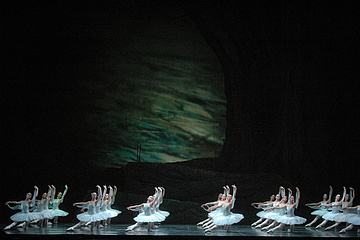
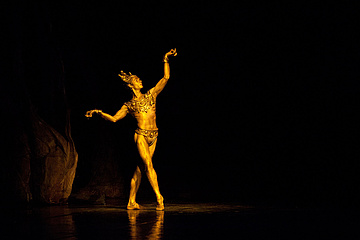
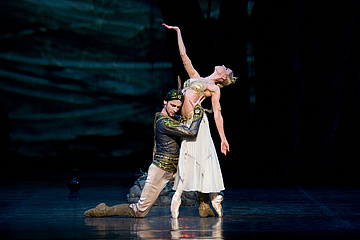
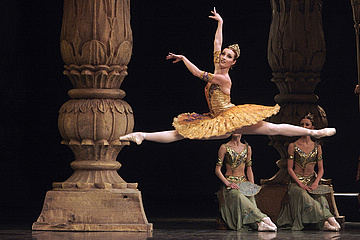
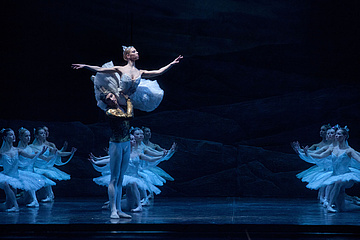
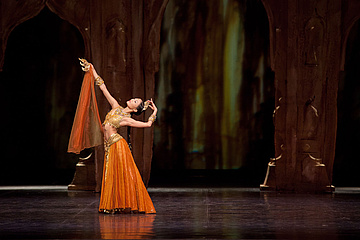
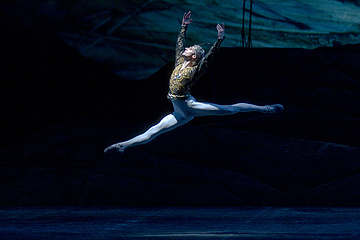
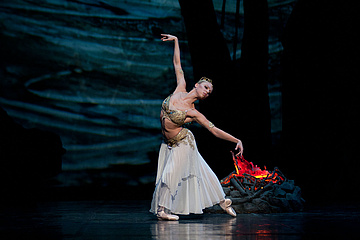
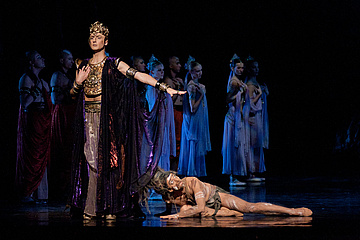
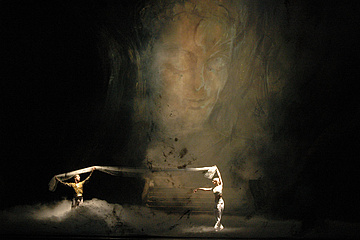
 Dagmara Dryl
Dagmara Dryl ![[Translate to English:] Maksim Woitiul](/fileadmin/_processed_/3/c/csm_maksim_woitiul_www_mini_45f943f354.jpg) Maksim Woitiul
Maksim Woitiul  Yuka Ebihara
Yuka Ebihara  Sergey Basalaev
Sergey Basalaev ![[Translate to English:] Dawid Trzensimiech](/fileadmin/_processed_/a/8/csm_Dawid_Trzensimiech_www_mini__fot._Ewa_Krasucka_2888-BW_7b1c0dc642.jpg) Dawid Trzensimiech
Dawid Trzensimiech Robert Bondara
Robert Bondara 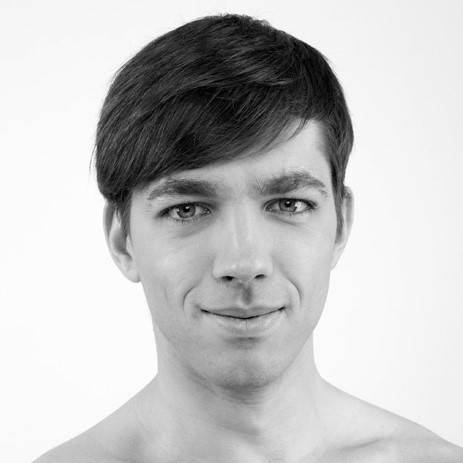 Paweł Koncewoj
Paweł Koncewoj  Chinara Alizade
Chinara Alizade![[Translate to English:]](/fileadmin/import/media/img/ludzie/tancerze/medium/Vladimir_Yaroshenko_2024_-_kwadrat.jpg) Vladimir Yaroshenko
Vladimir Yaroshenko  Palina Rusetskaya
Palina Rusetskaya Wojciech Ślęzak
Wojciech Ślęzak  Shunsuke Mizui
Shunsuke Mizui Kurusz Wojeński
Kurusz Wojeński  Patryk Walczak
Patryk Walczak![[Translate to English:] Magdalena Ciechowicz](/fileadmin/_processed_/8/5/csm_Magdalena_Ciechowicz_7c8807b45f.jpg) Magdalena Ciechowicz
Magdalena Ciechowicz ![[Translate to English:]](/fileadmin/import/uploads/tx_news/Carlos_Martin_Perez_new_02.jpg) Carlos Martín Pérez
Carlos Martín Pérez Natalia Makarowa
Natalia Makarowa  Jadwiga M. Jarosiewicz
Jadwiga M. Jarosiewicz  Stanisław Zięba
Stanisław Zięba  Alexei Baklan
Alexei Baklan 

